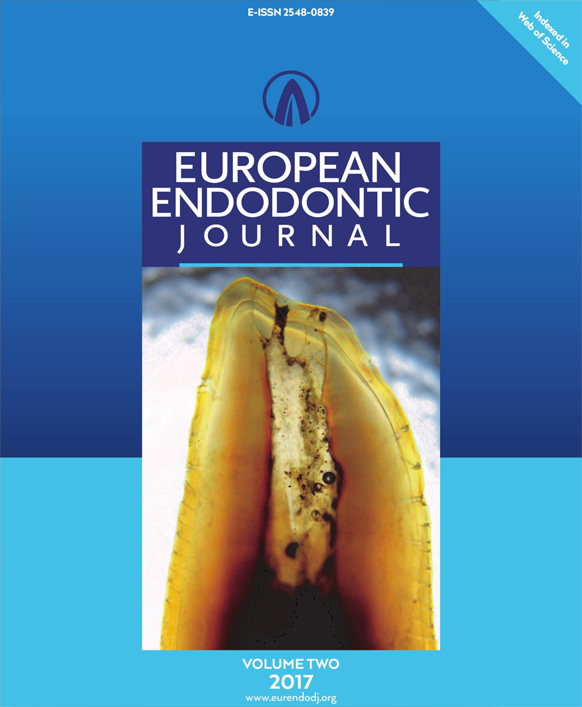
European Endodontic Journal
Yazarlar: Karen Barea De Paula, Israel Bangel Carlotto, Daniel Feijolo Marconi, Maria Beatriz Cardoso Ferreira, Fabiana Soares Grecca, Francisco Montagne
Konular:-
DOI:10.14744/eej.2018.64936
Anahtar Kelimeler: Antimicrobial activity,Calcium hypochlorite,Dental pulp,Endodontics,Irrigation,Microbiology,Sodium hypochlorite
Özet: To compare the antimicrobial activity and tissue dissolution capacity of calcium hypochlorite (Ca(OCl)2) solution with sodium hypochlorite (NaOCl) solution at 0.5%, 1.0%, 2.5%, and 5.25% concentrations. Methods: To determine the inhibition halos produced by the tested substances against Enterococcus faecalis, the agar diffusion method was employed. Additionally, the broth contact method was used to determine the time required for the inhibition of E. faecalis. Bovine pulp fragments were used to test the dissolution. Half of the pulps were freely deposited samples in cell culture wells, and the remaining samples were fixed on bovine dentine bases. Results: For both Ca(OCl)2 and NaOCl solutions, the greatest inhibition zones were observed at 5.25% concentration. However, the most significant inhibition zone was measured with 5.25% Ca(OCl)2 solution (17.38 mm). Hypochlorite solutions at 2.5% and 5.25% concentrations required less time to inhibit E. faecalis than those at 0.5% and 1.0% concentrations (P<0.05). There was no difference in inhibition times between 2.5% and 5.25% hypochlorite solutions (P>0.05). The most effective hypochlorite solution concentrations were 5.25% and 2.5% for dissolving pulp fragments (P<0.05). Additionally, suspended pulp fragments were more susceptible to dissolution than fragments attached to dentine blocks (P<0.05), except for 0.5% Ca(OCl)2. Conclusion: Ca(OCl)2 solutions showed antimicrobial activity against E. faecalis and can dissolve pulp tissues. Future studies are warranted to examine the suitability of Ca(OCl)2 in the chemico–mechanical preparation of the root canal system.